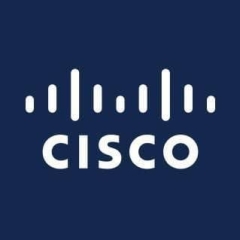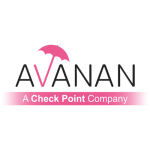What is our primary use case?
It is like a gateway for email. They receive all your email traffic. They send over your email traffic, and it is the first incoming point and the last outgoing point. They deliver the traffic to the destination. Whatever it is, you want to be informed of what is happening. Depending on the site's deployment, if you have a single device, then you have all the information on the device. And if you have several devices, you have all the information on every single device for each device. However, for consolidation, you need another device called Security Management Appliance (SMA).
It has no real interaction with other stuff. It does not interact with a gateway beyond the networking level. You have a router and that router provides IP addresses for a switch, etc. You don't have to integrate Cisco Secure Email with something specific since it is standalone and only requires basic essential networking. You can integrate it with a firewall, like ASA, but that firewall has to allow traffic. To do that, you would open port 25.
It is available to be deployed as on-premises, on the cloud, and hybrid cloud.
How has it helped my organization?
The solution is valuable if you are looking for a security email gateway that provides you with the most services possible. It has anything that you may be looking for in an email deployment, except for the endpoint which should be supported by something else, like Exchange. It doesn't have mailboxes because it is a gateway.
There are some methods to authenticate email, i.e., putting a stamp or seal of trust on an email, where one method is DKIM and another is SPF.
- For SPF in the DNS, where you have records that list the different devices or IP addresses that can send email from a specific domain, a security device can consult that DNS and check if the mail coming from that domain is coming from an authorized source.
- DKIM is a cryptographic signature of an email. It is usually what you announce is the public key of that system's PKI and verify the signature in the headers. You have a checksum of all the contents so it is possible to define or identify whether the message has been tampered with in route.
They are mutually exclusive in a way, so DMARC consolidates both. It provides alignment with the IP address, domain name, etc., and has to match at least one, being properly aligned. It has become something very important for compliance.
When you are receiving, you use all this information to decide whether an email is legitimate. Or, if you also need to deploy your DKIM, DMARC, and SPF infrastructure, that lets the rest of the world know where you are sending email from and how you are authenticating your email.
It can honor all SPF, DKIM, and DMARC rule sets and apply rules based on the results of these tests as well as sign the DKIM. Therefore, your email can comply with whatever you are announcing on your DNS for the rest of the world to know that you know about the signed domains. It has perfect, robust integration on that.
What is most valuable?
The most valuable feature is reputation filtering. In the beginning, it was based on just the IP source. but it has now evolved to domain reputation. It allows you to classify different IP sources and different sender groups, where you can reject to throttle to whitelist from any IP sources, domains, etc. Based on the reputation gathering, the reputation is powered by Talos security. It is a super powerful feature. That alone gets rid of more than 50% of the crap from the traffic flow, before even hitting the anti-spam or antivirus.
If you have some knowledge about email, it is a pretty simple solution that has many controls on different levels, from the gateway part to accepting messages from certain sources to stringent filtering. It is state of the art with anti-spam, antivirus, and different threat prevention features.
SecureX is powered by Talos, Sourcefire, etc. Today, it is the largest, richest threat intelligence on the market. SecureX is quite standalone in regards to integration since you put it into the network, whether it is on your own cloud or a third-party cloud.
If you go to the filtering level, you can have very accurate features or filters since it is programmatic. At a certain point, you can define sets of rules, such as where the email is coming from, whether it has this content, or to apply this policy. For example, if it has the same considerations, but the content is different, apply this another policy. It is super flexible and very customizable to your needs. It is not difficult to use.
It provides information, reporting, logging, and tracking. It has powerful tracking, so you can know exactly and accurately where an email came from, for which specific device, etc. It shows the emails which were:
- Dropped
- Rejected
- Quarantined
- Accepted by which policies.
It also shows the rule sets applied for that email and considers
- The source
- The Offender
- Anything else that you may consider in an email.
It has an intuitive, clear graphical interface where you can deploy your policies and understand the overall flow. There are a lot of things that you cannot handle on the graphic interface, like message filters. For this, you need to go to a lower level where you have more power, like command line interface. So, this solution has the best of both worlds. There are not a lot of bells and whistles. It is more practical with access to most features that you can configure.
What needs improvement?
You can consolidate on SMA if you want to spam or threats quarantined for multiple devices. It is not advisable for a single device, because if it fails, you are left without any email.
I would like to see a few changes to the UX.
There is space for improvement with data loss prevention, particularly with third-parties integration. Data loss prevention is quite important, though most customers have some third-party or other elements in their network doing data loss prevention, specifically for email. However, if it could be possible to integrate with other solutions, not only on the email flow, but on analysis for a connector or something like that, then that would be ideal.
The Forged Email Detection feature needs improvement, particularly with domain. The sensors are not that good and the rules sets are unclear.
For how long have I used the solution?
I have been using it since 2004.
What do I think about the stability of the solution?
It does not add anything to the potential downtime for a corporation, unless everything fails. If all your email exchanges fail, then you don't have email, but this solution does not affect the performance of your whole network.
At the minimum, you need two devices. If you have two devices and one fails, then the other one can handle the work, though you might have some email delays.
You should keep track of what is going on. It does need some daily administration, fixes, and policy changes.
How are customer service and support?
In general, their technical support is really good. There are a few who are still learning, e.g., not providing enough help, but there is always the option to escalate.
Which solution did I use previously and why did I switch?
It was the IronPort before Cisco acquired it in 2007. It is the same appliance and software. This solution has been upgraded by several versions, but it is basically the same, they just changed the name.
What about the implementation team?
I have done the architecture for a company in China.
What's my experience with pricing, setup cost, and licensing?
It is a super big router that costs a few hundred thousand dollars.
Which other solutions did I evaluate?
These days, the first tiers of this market have good enough anti-spam, antivirus, etc. These have become routine. There are some other not-so-good solutions, like Barracuda and Fortinet, but it depends on how much you are willing to pay as this solution is not cheap.
The best other solution is Proofpoint. They have been long-time competitors who have also been evolving. The big difference is it is more fancy because it has more bells and whistles. The solution is good as well. However, they are super expensive, not cheap.
If you want a multi-tiered deployment, you could perhaps have Secure Email on the cloud and Proofpoint on-premises. Then, you have the two best solutions in the market working together. I have customers who have done this and are satisfied. Very few solutions can compete with Secure Email and Proofpoint outside of the price. If your budget is a problem, then you have a problem.
Along with Proofpoint, this is the best solution in terms of preventing spam, malware, and ransomware.
Check Point has fancy graphics and an interface where you can do a lot. The Cisco Secure gateway has both, though not as fancy as Check Point, but a big majority of the tasks can be done on the graphical interface level.
What other advice do I have?
It is not so difficult to us, but neither is it easy, particularly if you don't have some knowledge about email.
Whatever you are looking for with an email security appliance or device, you mostly have it, though nobody is perfect.
The solution’s ability to prevent phishing and business-email compromise is fairly good. DKIM, DMARC, and SPF integration are the best way to prevent phishing, spoofing, etc. However, they still have room to work in this area.
Disclosure: I am a real user, and this review is based on my own experience and opinions.






















